THREE OUTLAW SAMURAI (1964)
When peasants kidnap a magistrate's daughter to coerce him into reducing taxes, a ronin and two renegades take up the fight for them.
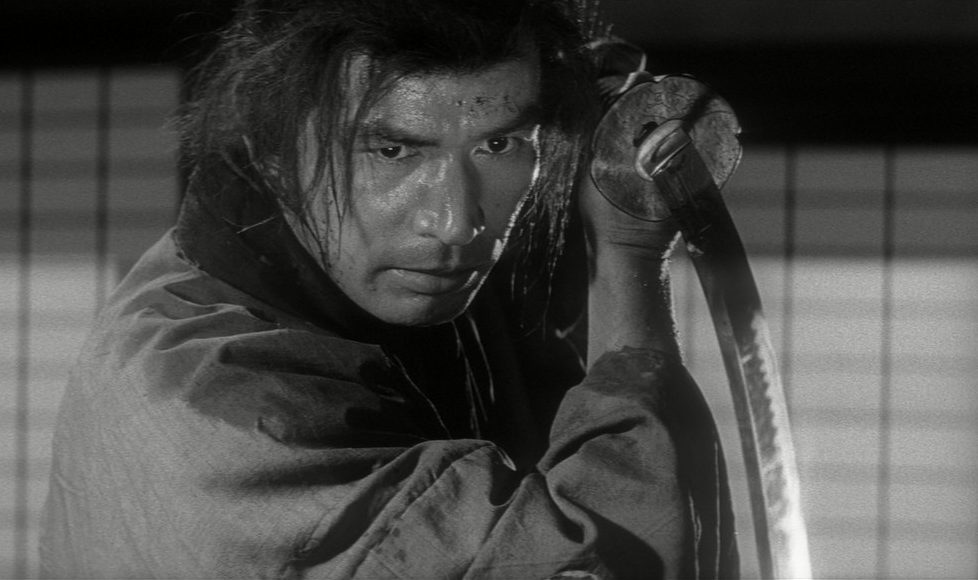
When peasants kidnap a magistrate's daughter to coerce him into reducing taxes, a ronin and two renegades take up the fight for them.


Three Outlaw Samurai (三匹の侍, Sanbiki no Samurai), meticulously restored for this new Criterion Collection Blu-ray, is arty and accessible and a great entrée for anyone wanting a taste of the ‘Ramen Western’. John Sturgess’ The Magnificent Seven (1960) served as the appetiser for Western audiences, as it was essentially a remake of Akira Kurosawa’s The Seven Samurai (1954), but with guns instead of swords.
The Italian film factory was already primed to exploit any potentially successful genre and, inspired by Sturgess’s fusion, they cooked up the Spaghetti Western based on a genre recipe imported from the Far East. Sergio Leone made no secret of pilfering ideas laid out in similar Japanese films, leading to legal action over plagiarism because A Fistful of Dollars (1964) bore too close a similarity to Kurosawa’s Yojimbo (1961).
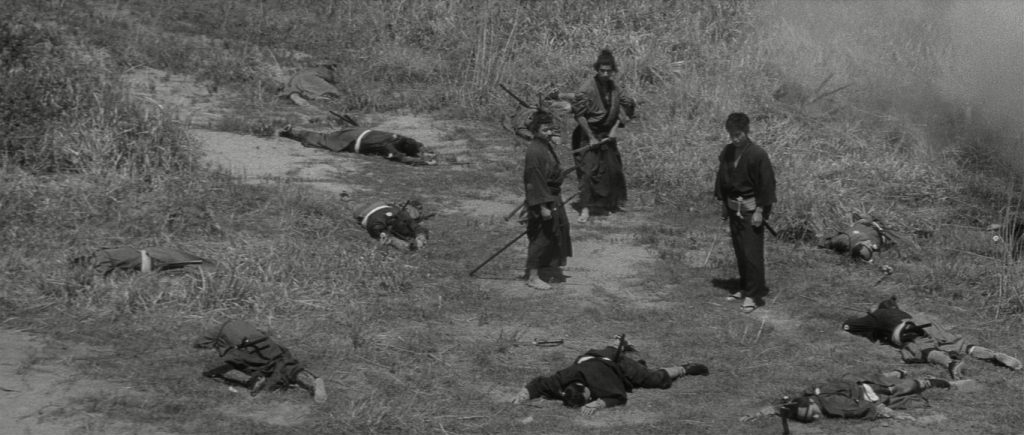
Clearly, Leone’s third dollar movie, The Good, the Bad and the Ugly (1966), drew much from Hideo Gosha’s assured film debut Three Outlaw Samurai, released just two years earlier. There are strong similarities in style and story with the three titular characters being outcasts, of one sort or another, and morally questionable to varying extents.
Gosha’s good guy, the rōnin Sakon Shiba (Tetsurô Tanba), a wandering samurai without a master, is just as cool and effective as Clint Eastwood’s famous cheroot-chewing character. The bad, Kyôjûrô Sakura (Isamu Nagato), is just as likeable as Eli Wallach’s, though not really as ‘bad’ as all that. Which should leave Einosuke Kikyô (Mikijirô Hira) as the ‘ugly’, but without giving too much away, I think it’s safe to say he’s nowhere near as cold and ruthless as the Lee Van Cleef incarnation. The central plot revolves around the changing loyalties of these three characters as their circumstances alter and new information is revealed.
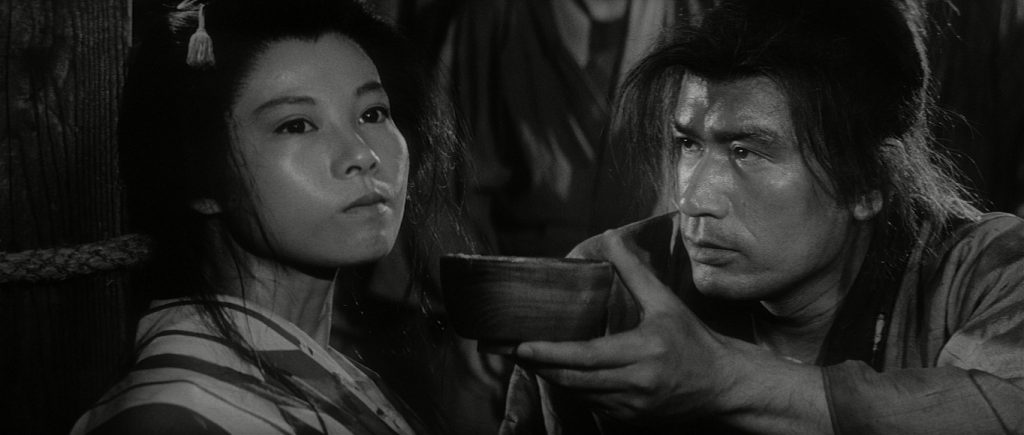
Even at the time, this was an impressive cast. Tetsurô Tanba was already a star in Japan having made about 100 films with more than 200 roles yet to come! The year before, he’d been one of the 13 Assassins (1963) and was about to appear in Kwaidan (1964). It was just the third role for Isamu Nagato in a prolific career that was to span five decades. Mikijirô Hira was already a genre favourite unafraid to play ambiguous characters. He would also star in Gosha’s second feature, Sword of the Beast (1965).
During the opening credits, we watch the feet of a lone traveller as he trudges through mud and barren scrubland before we see the traditional sword of a samurai, a roadside shrine, and his face all in one single shot. He pauses to rest at the shrine and a stray dog lopes away. This simple sequence has subtly established nearly all the key factors that’ll drive the narrative. The land has failed to provide bountiful crops. There will be a three-way conflict between the sword, the spirit, and the flesh, and what they may symbolise. And… is a stray dog any less a dog?
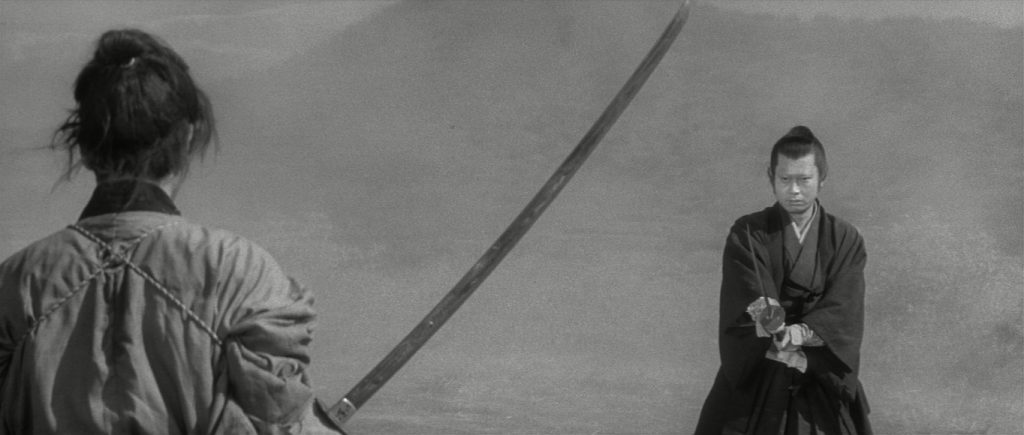
A silver hairpin in the dirt causes Shiba to pause and investigate a nearby run-down mill, where he’s confronted by a group of grimy peasants who hold a young noblewoman captive. He’s not swift to judge and takes his time to read the situation. He’s so cool he doesn’t even need to unsheathe his katana to fend off the armed peasants.
It transpires that the poor villagers, led by old Jinbê (Kamatari Fujiwara), have captured the regional magistrate’s daughter, Aya (Miyuki Kuwano), as leverage to demand an audience with the feudal lord. Through their dialogue, we learn that the clan overlord will be visiting in ten days to check that the province is being run efficiently.
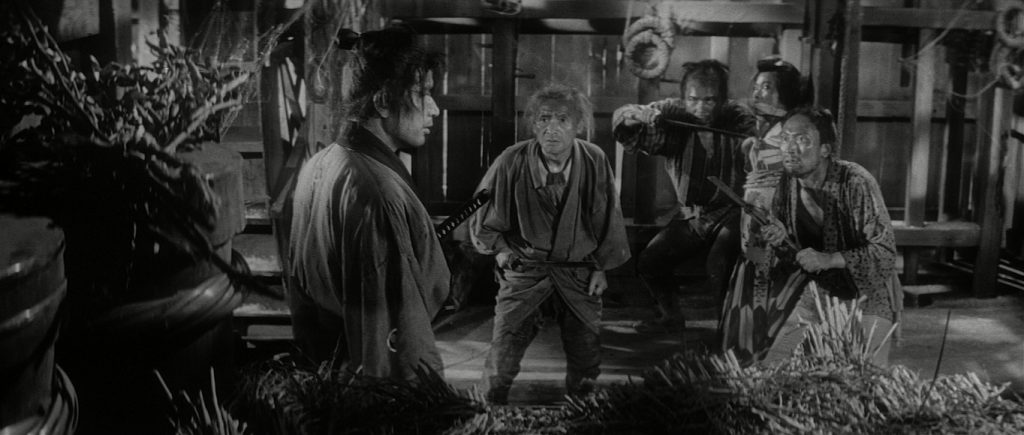
That’s pretty much the story set-up, with the time limit introduced to drive events apace. The feudal lord must oversee suppression of the upstart peasants and impose order before losing face in the eyes of his master. His magistrate must achieve this on his behalf, whilst also trying to rescue his daughter. It seems a simple task, but neither predicted that a wandering samurai would choose to side with the villagers.
Right from the start, Gosha demonstrates his prowess as a visual storyteller. This should come as no surprise because he’d honed his skills over the previous decade, working his way up the ranks at Fuji Television to become one of its producers before writing and directing a mini-series, Sanbiki no Samurai. Three Outlaw Samurai is a cinematic adaptation of his television series or, as I understand it, the ‘origin story’ prequel.
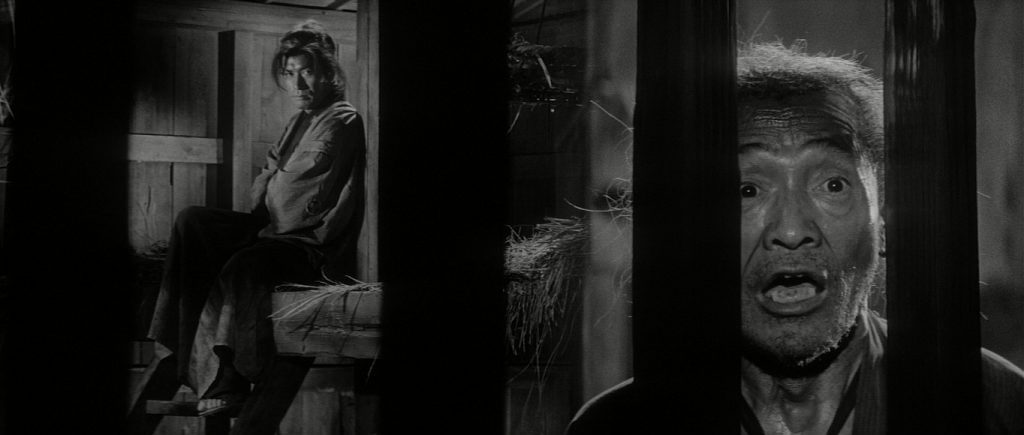
So, Gosha had plenty of time to think about it and this is evident throughout. Every shot is exploited to keep it interesting, the plot is pared down and focussed, and the characters are elegantly delineated, simple yet believable. He never lets things drag for a moment and there are plenty of surprises. Regular action keeps it exciting but that’s not to say it doesn’t have its more contemplative moments.
The tight action, choreographed by Kentarô Yuasa, always serves the plot rather than interrupting it. This was Yuasa’s first film, too, but he’d go on to contribute his slick action and clever sword-play planning to half-a-dozen more influential samurai movies for Gosha including Sword of the Beast, Samurai Wolf (1966), Samurai Wolf II (1967), and the well-regarded Goyokin (1969).
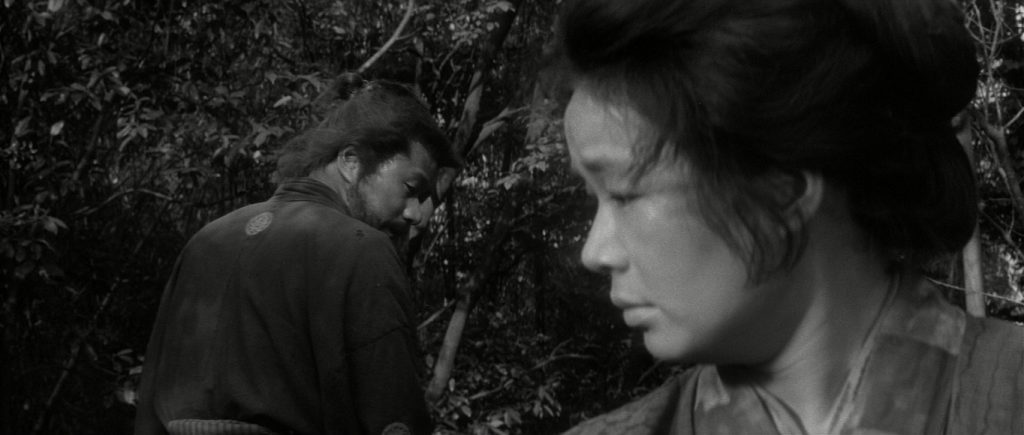
Things don’t necessarily work out as expected and the lord has to send for a trio of mercenaries who claim to be ‘gods of death’, which doesn’t bode well for our protagonists. And that’s not their only problem…
There’s also a feared master samurai, ‘the best swordsman in all the lands’, who will be arriving just ahead of the clan overlord, so his pending appearance is like a countdown to the inevitable finale. The entire scenario and structure would be a perfect fit for a western and that’s why it makes a good entry point into the Japanese chanbara—the samurai swordplay genre.
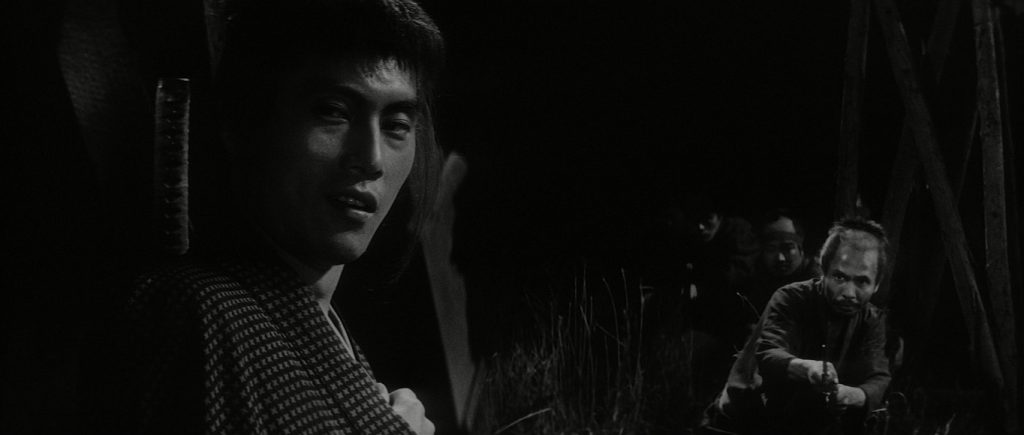
Samurai films do tend to be a bit macho, to say the least, with female characters merely serving as plot devices. Here, though, Miyuki Kuwano shines in the main supporting role as Aya and her character has a well-defined arc that doesn’t wholly follow the expected trajectory. She develops sympathy for the plight of the peasants but has to juggle her feelings for Shiba, her honour, and family obligations. By the end, her choices are a catalyst for at least one major plot turn-around. Although she looks so young here, Miyuki Kuwano was already a star with more than 30 appearances, having begun as a child actor in the early-1950s.
A lot of what happens would not be possible if it weren’t for women questioning their roles and intervening against injustice. Shiba is rescued by a servant girl in a clever plot twist expertly set-up to be believable and poignant by Gosha and his skilled writers. The screenplay was written with Eizaburo Shiba, with whom he’d repeatedly collaborate, and Keiichi Abe, who would later be responsible for penning some of the wacky sci-fi films to come out of Japan in the 1980s, notably the Planet of the Apes knock-off Time of the Apes (1987).
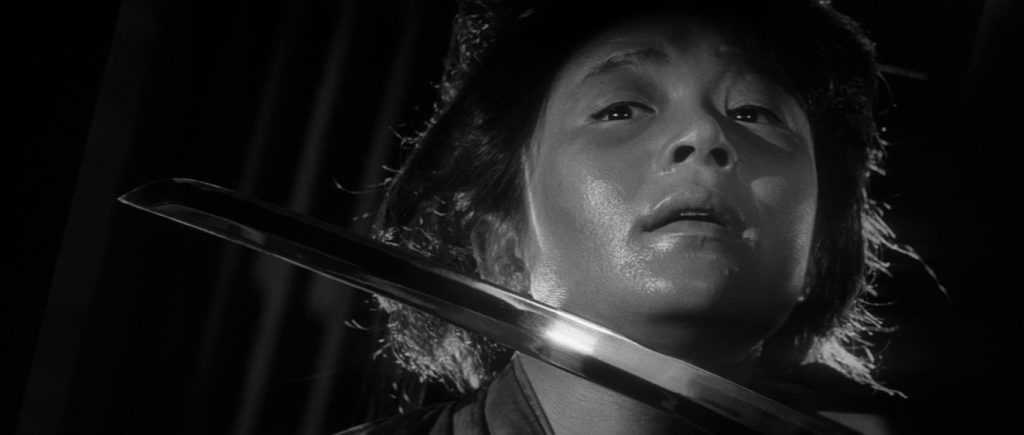
The producer, Gin’ichi Kishimoto, also had some additional, uncredited, script input and would go on to produce several other important genre movies including Gosha’s better known, Sword of the Beast and the great Masaki Kobayashi’s international breakthrough film Harakiri (1962).
The complications arise due to the codes of honour integrated into medieval society in Japan and it’s these that drive the central narrative. It deals with how the different key players either conform to or reject the roles foisted upon them, whether familial, bureaucratic, class, nobility, gendered, or perceived value due to their skills or experience.
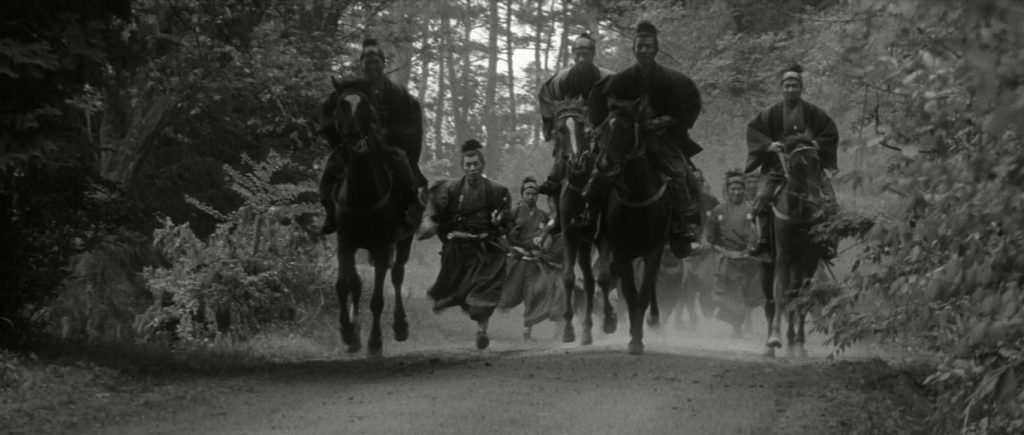
These ingrained social codes are not merely touched upon but drive the plot. For example, the feudal lord’s own samurai will not interfere, to begin with. He won’t sully his blade with the blood of peasants. However, when he knows that a rogue samurai has joined their ranks, then it becomes a fair game as he’ll be pitted against a worthy strategist of comparable rank. So, in a twisted way, it’s Shiba’s choice to the aid peasants that rapidly escalates the situation.
Three Outlaw Samurai looks great, with some beautiful monochrome cinematography by Tadashi Sakai that utilises deep focus, structural contrast, and meticulously composed scenes. Unlike many of the Euro-westerns that it may draw a comparison with, the vigorous visual style never eclipses the characters and one of the most surprising things is that the viewer becomes emotionally invested.
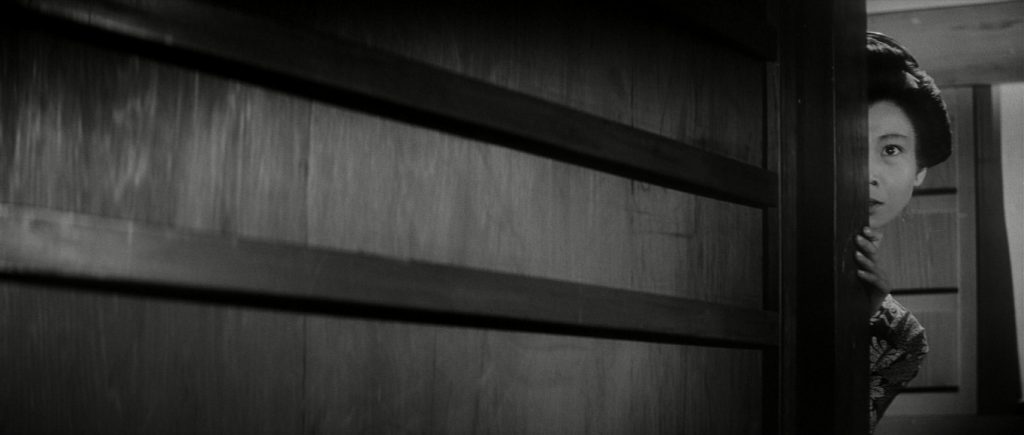
The entwined human stories, though painted with broad strokes, aren’t as stereotypical as many a western equivalent. I love Spaghetti Westerns but in general, their characterisation is rather more ‘comic-book’. It may also have something to do with the prowess of an excellent cast here who were nearly all established stars at the time.
Gosha repeatedly shoots through barriers that physically separate the players, such as windows and screens. True these are strong compositional elements in a purely visual way, but I think they go beyond that and are obviously metaphors of class divisions or of emotional distance. It’s not just stylistic and they form an important narrative strand in themselves.
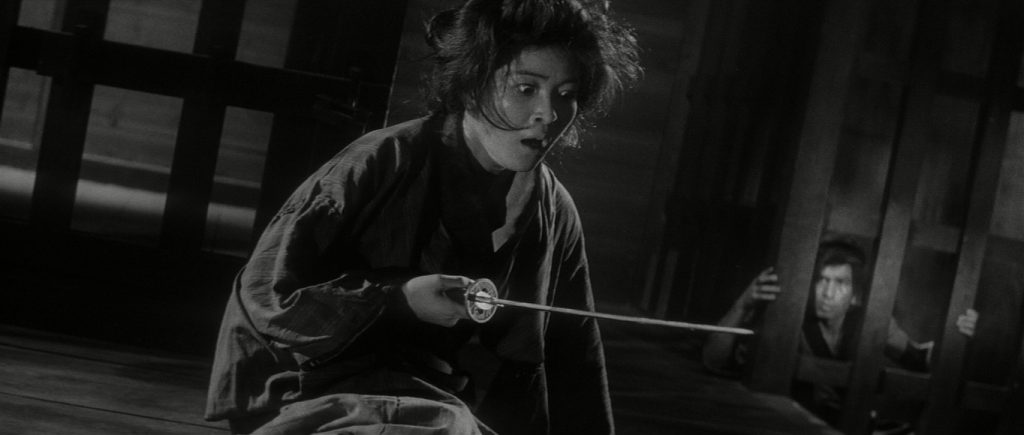
It seems that Japanese directors have the idea that objects, aspects of the set, props, and how the actor responds to those things, contributes to the narrative. Perhaps just as much as the cast’s responses to each other. Is this a legacy from their spiritual heritage and the animistic beliefs of Shinto? Maybe.
Despite having a rich theatrical tradition, Japanese filmmakers embraced cinema as a new medium, in itself, and not simply a method of recording a stage play. They used the camera to make the viewer a ‘ghost’ that entered the scene. Surrounded by the action, we move among the players, yet are unseen by them. The camera strolls within the virtual world of the film and looks around a 360-degree environment. Not unlike a first-person video game does today!
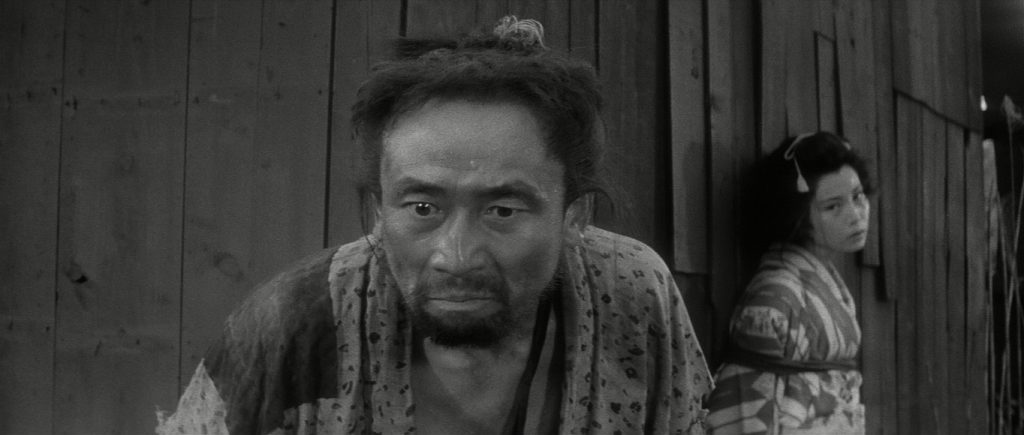
When one becomes aware of this, it’s evident in many classics of Japanese cinema. So, perhaps Gosha isn’t particularly innovative here, but to the western eye, his style remains visually arresting. All the more impressive as this was just the first in an important career that included a dozen films that would consolidate and redefine the samurai film.
Three Outlaw Samurai was made at a perfect time to draw upon the established tradition of the chanbara, while looking beyond the domestic market to a wider audience abroad. Tadashi Imai had garnered international praise at the Berlin Film Festival for Bushidō (1963), where it won the Golden Bear for ‘Best Film’ and its star, Yorozuya Kinnosuke, had won ‘Best Actor’. It proved there was an appetite and potential market to be tapped overseas.
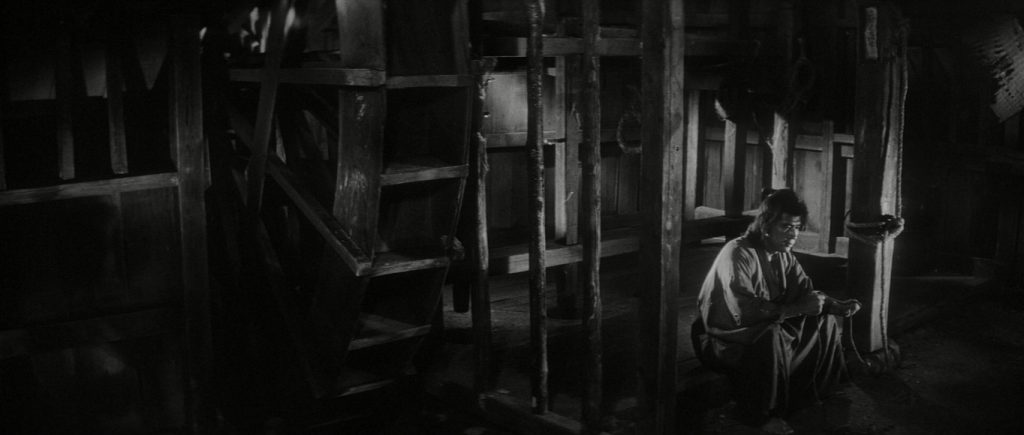
Bushidō established a template for a new generation of dishevelled samurai films that veered away from the mannered period dramas known as Jidaigeki (a mainstay since the 1920s) and introduced a more violent, action-driven format. The genre was conscious of the Hollywood westerns which, in turn, it would influence.
Three Outlaw Samurai is poised between the mythic approach of Leone and the poet intricacies of Kurosawa and mediates between the cinematic traditions of east and west. Anyone who appreciates a good euro-western will find much to enjoy and if approached within the same genre context, this would be a superior example!
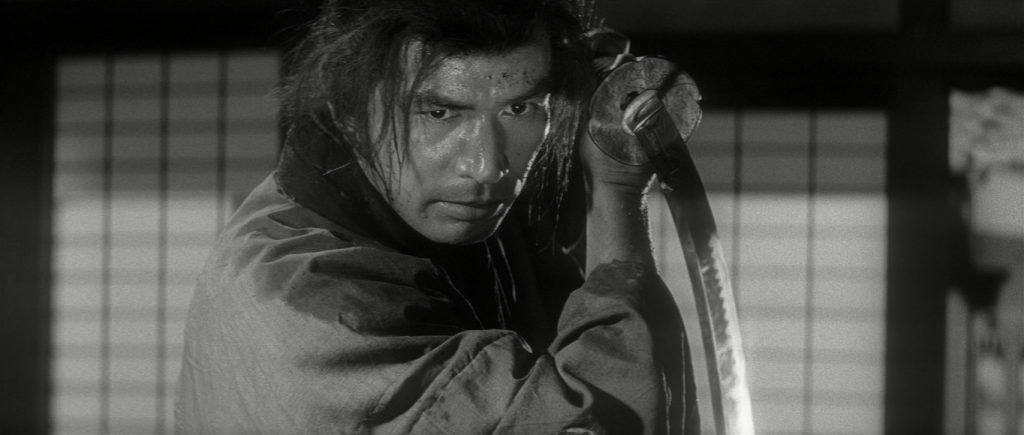
Hideo Gosha would become a major proponent of the style and produce several of the most noteworthy examples. In comparison to some of his later offering, this one’s perhaps a little more restrained in terms of visceral violence. Yes, there’re some shocking scenes, but the details are implied, and we seem to feel what we imagine on a deeper level than if we’d seen it in close-up!
At times, the deaths are so swift and matter-of-fact they’re of little note, others are brutal and tragic. There’s blood, but nothing too graphic, not when compared to the arterial spray and flying limbs of some later samurai action movies.
Like most post-war samurai films, Three Outlaw Samurai discusses the conflict between morality and obligation. It’s a theme that was part of the mass consciousness. It examines the evil that men do out of misguided loyalty and condemns the inequalities in class and gender perpetuated by an honour-bound society invested in maintaining historic power structures. It underlines how hard it is to break the cycle that renews itself with each generation that clings to hereditary power at the expense of justice with no recompense for past wrongs. It’s not shy or pretentious about this and, whilst it never fails to entertain for a moment, it does have Gosha’s typically cynical tone. A delightful cynicism it shares with many Euro-westerns. Or vice versa?
JAPAN | 1964 | 93 MINUTES | 2.35:1 | BLACK & WHITE | JAPANESE

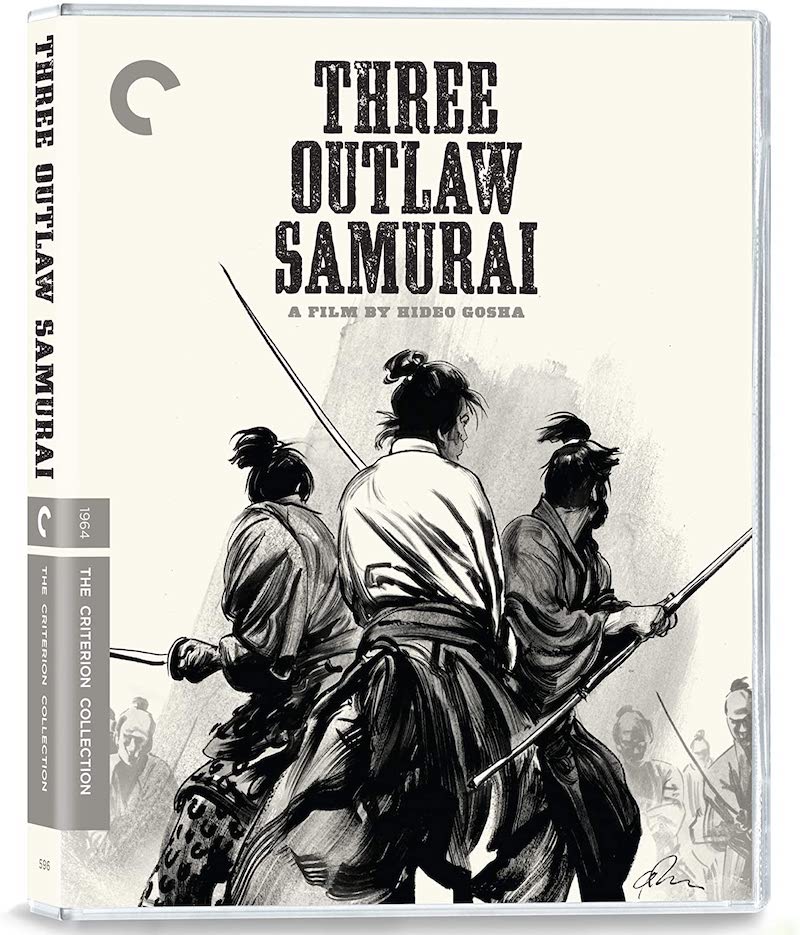
Not sure what makes this a ‘Special Edition’. It’s crying out for an audio commentary or at least one of those video essays that give interested viewers some background information. This is a fairly important title and deserved that little bit extra…

director: Hideo Gosha.
writers: Keiichi Abe, Eiza Shiba & Hideo Gosha.
starring: Tetsuro Tamba, Isamu Nagato, Mikijirō Hira & Yoshiko Kayama.
